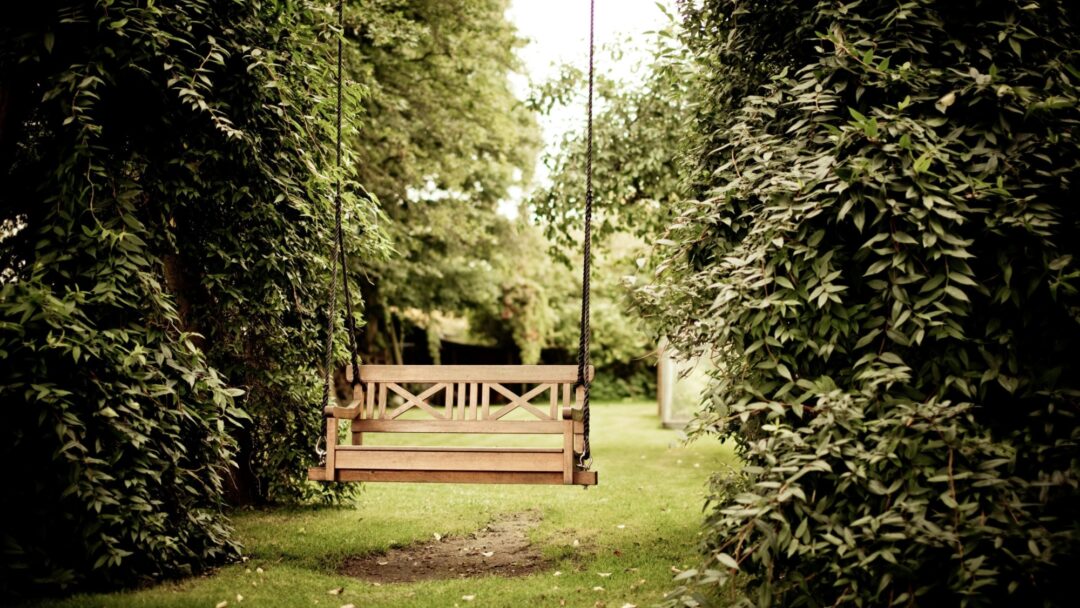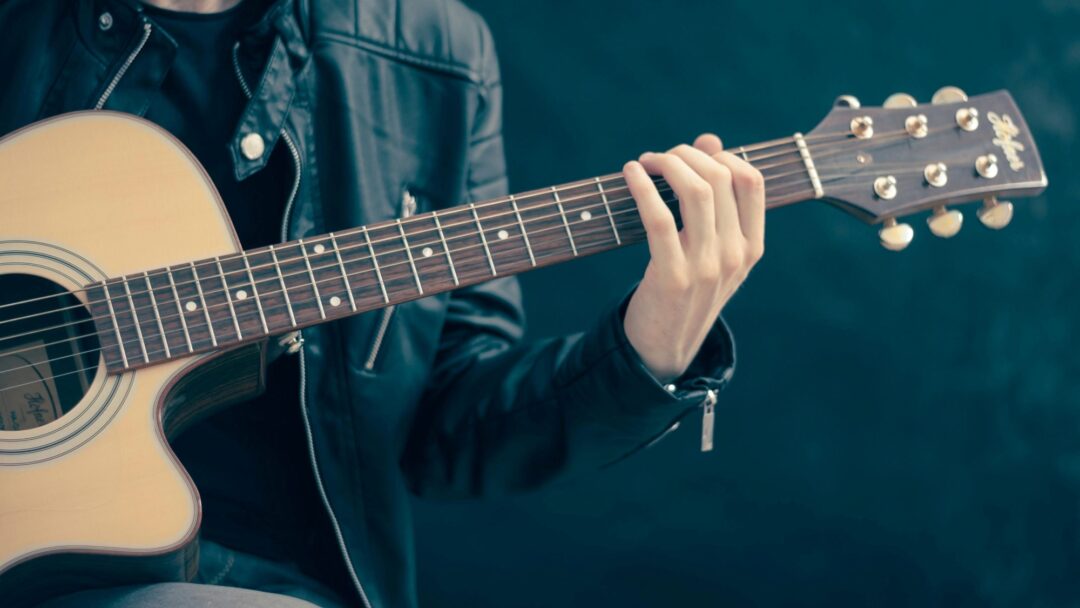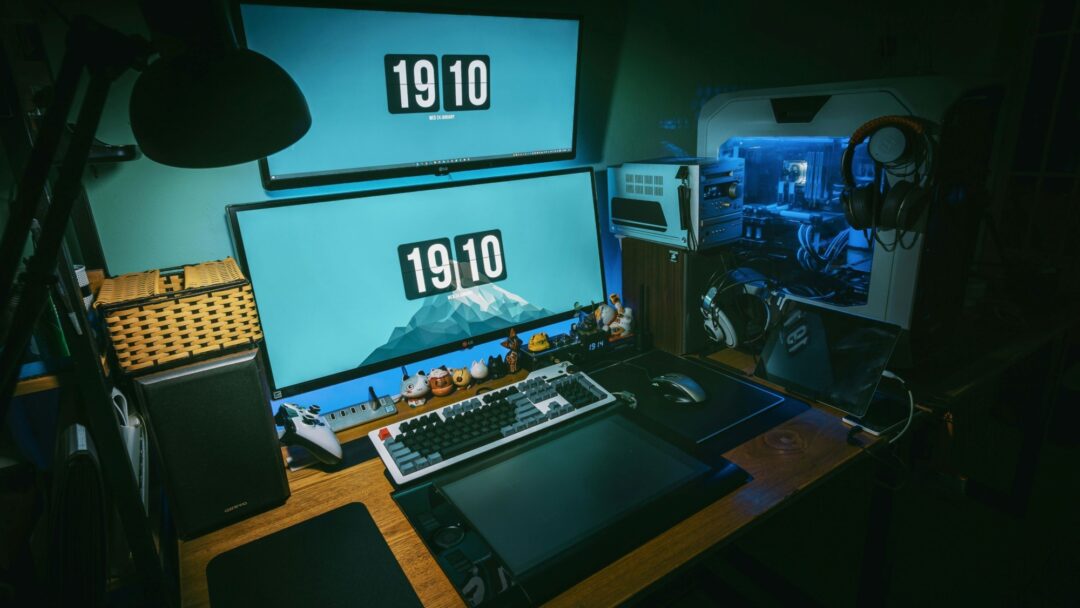Audio
Cecilia King - Dance Therapy
Ablequest by
2RPH3 seasons
14 mins
This program discusses dance movement therapy and how it works - featuring Cecilia King of the Dance Therapy Association.

This program discusses dance movement therapy and how it works with Cecilia King of Bardwell Park, Sydney.
Cecilia works with art and music therapists as well as occupational and speech therapists.
Cecilia, a professional member of the Dance Therapy Association of Australasia spoke to Elaine Wziontek about the history of dance therapy and her work with people of all ages and abilities.
Speaker 1 00:03
With information on the latest developments in assistive technology and initiatives, from the studios of 2RPH in Sydney, RPH Australia brings you AbleQuest.
Speaker 2 00:19
You
Speaker 1 00:22
Hello, I'm Marnie Roper. Since the time of our earliest ancestors, dance has been fundamental to human life and culture, a form of self -expression, celebration, even a way to explore healing. In the mid -20th century, dance became accepted as part of the integral relationship between mind and body, and dance movement therapy emerged.
Speaker 1 00:46
Today, dance movement therapists have extensive training and work with people of all ages and abilities, in special schools, aged care facilities, and in community settings. In today's Ablecrest programme, Elaine Zjondek spoke to Cecilia King, a professional member of the Dance Therapy Association of Australasia.
Speaker 1 01:08
Cecilia works with a group of registered creative arts therapists and clinicians in Bardwell Park, Sydney, to promote confidence, fitness, and wellbeing. Together, they use music, art, and dance, M -A -D.
Speaker 1 01:25
Let's hear more.
Speaker 3 01:26
How did dance movement therapy come about?
Speaker 2 01:31
actually dance movement therapy pretty much began in ancient times for people to use dance and movements as a form of healing, but it did come into a proper therapy back in 1940s and it's pioneered by Marion Chase in the United States.
Speaker 2 01:50
She started off as a modern dancer, but her own training wasn't actually as a dancer. She studied arts and got into an injury and hurt her back, and she was referred to using dance as a way to rehabilitate her back injury to strengthen her back.
Speaker 2 02:09
And that's when she found that dance was her natural form of communication. And she went on to develop dance movement into a form of therapy that supports people with disabilities, with mental health conditions and also people who suffered from PTSD.
Speaker 3 02:28
So how do you think it works? The body and mind working together?
Speaker 2 02:31
Yes. Definitely the body and mind working together. When I engage in movement, I'm also engaging in my sensory experience. I start to realize my feelings and emotions that's associated to these dance and movements I'm engaging in.
Speaker 2 02:48
Also, it helps me to build connections with my peers who dance with me. So on the social level is a very enjoyable exchange that's often done non -verbally. Using different dance styles, we get to also exchange our culture.
Speaker 3 03:05
So are you a classically trained ballerina or are you a jazz dancer?
Speaker 2 03:08
So I started training in ballet at the age of three. I've also studied jazz, a Chinese folk dancing, and also modern dance.
Speaker 3 03:19
And you've just mentioned that you express your feelings and struggles too, I suppose, with dance. So it's been good for you personally, has it? Challenging as well, as good, and also challenging. So then you became a dance therapist yourself.
Speaker 3 03:32
Yes.
Speaker 2 03:34
After studying in dance at University of New South Wales, I went on to dance teaching and also choreography work and then I studied theatre. And I still find that I have a longing for something more in dance and found out about dance movement therapy.
Speaker 2 03:53
That's when I got trained in dance movement therapy in Sydney.
Speaker 3 03:57
So now do you run group sessions or individual sessions?
Speaker 2 04:01
moment I'm running more individual sessions, I used to run quite a lot of groups or dyettes, so parent and child sessions.
Speaker 3 04:10
What kind of children do you have? Do you have children with disabilities?
Speaker 2 04:14
Yes. So I have children who are on the spectrum and also children with ADHD or brain injury, expressive language delay.
Speaker 3 04:24
And can you give an example of a child who's been able to express themselves through dance where they haven't been able to do that verbally?
Speaker 2 04:32
A couple of my clients, like children who came to me at first day would have been like nonverbal and wouldn't really engage in like, eye contact or any kind of meaningful communication exchange. I would join them in whatever that they explore in my room and engage them through whatever they touched.
Speaker 2 04:53
Like I'll just mirror them and move with them and start building that connection through movement with them. And as I do that, children would suddenly realise, oh, that's someone actually reflecting exactly what I'm doing to me.
Speaker 2 05:09
They would then start to engage with me through, take my hand to touch whatever they wanted to engage with. Also, there'll be like magical moments when they all suddenly will look me in the eye and go, oh, you get me, you get what I'm trying to do here.
Speaker 2 05:25
And then they will playfully expand their movement repertoire, I call that. They'll suddenly go like, what if I make myself bigger or what if I make myself smaller? Are you going to follow me? Are you going to join me in this dance?
Speaker 2 05:41
That sounds like fun.
Speaker 3 05:43
The parents can do similar things at home, can they?
Speaker 2 05:45
Yes, so I also help parents to understand what all these movement means to the children and how we could actually build connections with them through engaging with them through these movements and often movements slowly become a dance as well.
Speaker 3 06:03
So, Celia, I imagine it's very rewarding doing what you do.
Speaker 2 06:07
remember working with a child who first came to me with aggressive behavior presentation and would throw chairs at me and would get very upset and also epsilon from the therapy rooms. We worked together in helping him to find his rhythm, find his expression of those big feelings through music, using a bit of musical instruments, finding the rhythm in the body and we started to move together and sometimes it might become a bit too much and we started jumping on trampolines together and the aggression gradually turns into a sword fight on the trampoline and while I interact and match his movement and he started to realize that and he would start to copy my movement and see if he can beat me on that as well.
Speaker 2 07:00
So the aggression gradually turns into a playful exchange and I could see how he gradually become more regulated even when he's feeling upset when he's angry and up to a point where he could then start to commence therapy with the other therapists with the occupational therapist and his speech therapist who previously couldn't engage with him because of the aggressive behaviors.
Speaker 3 07:28
Does it fit in with other allied health therapies, such as music and art? Yes.
Speaker 2 07:33
I would say with music and art especially with music often music also uses movement and also uses dance but their focus and their training would be the music. The therapist brings in the lens of movement analysis.
Speaker 2 07:48
We would incorporate also arts in our process as part of helping us to understand what's being experienced and similarly with art therapists their focus would be on art however they are also incorporating the body.
Speaker 2 08:06
I work alongside with a music therapist and also an art therapist.
Speaker 3 08:10
That's mad therapy, so does that stand for what?
Speaker 2 08:13
So, M -A -D, so M is for music, A is for art, and D is for dance movement therapy. Within ourselves, we often would work together, we would have shared clients too, and we'll work to understand what the creative process is up to for one another and how we can complement one another.
Speaker 3 08:35
So, some of your clients are children and you have adults as well.
Speaker 2 08:39
well? Yes, I do have add outs as well and I work with add outs who might be experiencing chronic pain and also I work with add outs with felt on the spectrum, Down syndrome,
Speaker 3 08:52
So if you've got chronic pain, sometimes you don't want to move very much. So how does Dan's therapy help with chronic pain?
Speaker 2 09:02
So it's about finding which part of your body and also your breath that would engage certain parts of your body to allow micro movements. We will start really small, we'll start with whatever the body is capable of.
Speaker 2 09:17
From that point on we will find to build connections in the body where the body would find that permission to actually allow big movements. We could also further explore how chronic pain is actually affecting the body and delve a little bit deeper into understanding the emotional and psychological aspects.
Speaker 3 09:40
How does dance movement therapy work with other therapies?
Speaker 2 09:44
Often I work alongside with other types of other health professionals, so such as occupational therapists and speech therapists, to gain an understanding of goals and focus that they're working on. So for example, if a child has certain sensory processing challenges, how could I actually work on those aspects through dance movement and reach between sensory to also the emotional aspects of the clients, to gain an understanding also sometimes from their psychologists of what the child or the person might be struggling with, and to connect those dots back to what does it mean when on the sensory level, on the movement level.
Speaker 3 10:34
So, would someone be referred to you from an occupational therapist or a psychologist?
Speaker 2 10:40
I do have occupational therapists referring to me clients and also psychologists and sometimes music therapists and art therapists as well.
Speaker 3 10:49
So, that's where the mad fits in, is it? Music, art and dance. So, you're the only mad therapist in Sydney?
Speaker 2 10:59
Well, I actually work alongside with another music therapist. Yes. And also an art therapist. Oh, I see. So I'm the D in the M .A .D.
Speaker 3 11:10
Do you use any of those ballet steps anymore?
Speaker 2 11:13
I would assess all the different kinds of training. So I'm training ballet, jazz, modern dance. I've done a bit of Latin ballroom dancing. So I've also been using some of those and Tai Chi, Qi Gong and also Chinese folk dancing.
Speaker 2 11:29
But I don't use them to impose it on the person that I work with. It's more about what natural movement or dance that they bring in. And I'm able to match them and mirror them back through my training.
Speaker 3 11:44
Professor Cecilia, do you think dance movement therapy is taken seriously as a useful tool in clinical practice?
Speaker 2 11:53
I think there is a growing recognition in Australia for the clinical use of dance movement as a form of therapy in the psychotherapeutic tool. Even with being professionals, I think there is a need for them to better understand the use of dance and movement are not purely to support social engagement, just for leisurely pleasure.
Speaker 3 12:14
And I understand you're a registered provider with the NDIS. Does that cover the cost or some of the cost of the sessions?
Speaker 2 12:22
Yes. So in Australia at the moment and under NDIS, dance movement therapy is not covered when you are an agency managed participant. However, because I am a registered NDIS provider because of my training in counselling, so I'm a registered counsellor as well.
Speaker 2 12:41
Through that, I'm able to incorporate my dance movement therapy tools into my sessions. They're covered. And for the rest of the other dance movement therapists who are not registered as an NDIS provider, you can still assess their service if you're plan managed or self -managed.
Speaker 2 12:59
I see.
Speaker 3 13:00
So we can people find out more is an organization which is an umbrella organization for dance therapies in there
Speaker 2 13:07
Yes, there is. I myself is a professional member of the Dance Movement Therapy Association of Australia. If anyone would like to find out more, please visit their website at www .dtaa .au.
Speaker 3 13:23
Somebody in their area
Speaker 2 13:25
Yes, yes, so if you're interested in searching for a Danceroom therapist nearby where you live there's a directory there and you'll be able to also contact DTAA to assist you.
Speaker 3 13:37
Thank you. Thank you very much for coming into the studio and I can see you move a little bit when you were talking to me. You gesture a little bit, don't you? Yeah. Thank you.
Speaker 2 13:47
Thank you so much.
Speaker 3 13:49
I'm Elaine Wziontek, and I've just been talking to Cecilia King, who's been telling us about dance movement therapy. Cecilia is based in Bardwell Park, in Sydney, and her company is MAD, M -A -D, standing for Music, Art and Dance.
Speaker 1 14:17
You have just been listening to AbleQuest, a program that looks at developments in assistive technology. Thank you for listening and goodbye to our next program.
Continue listening

Blind Sports Australia CEO Matt Clayton speaks about its work with blind and vision impaired athletes across 21 sports.
Matt Clayton - Blind Sports Australia
Ablequest by 2RPH
5/5/2023
•13 mins
Audio

Vivid, Sydney's celebration of creativity, seen from a disability access focus by its director.
Gill Minervini - Vivid
Ablequest by 2RPH
19/5/2023
•14 mins
Audio

This program discusses dance movement therapy and how it works - featuring Cecilia King of the Dance Therapy Association.
Cecilia King - Dance Therapy
Ablequest by 2RPH
14 mins
Audio

What are the challenges of providing audio description on Oz TV? Hear Lauren Henley, Aust Federation of Disability Organisations.
Lauren Henley - Audio Description
Ablequest by 2RPH
16/6/2023
•14 mins
Audio

In Part 1 of a 2RPH interview, assistive tech expert David Woodbridge explores latest innovations to make everyday life easier.
David Woodbridge - Tech Update Part 1
Ablequest by 2RPH
30/6/2023
•14 mins
Audio

Features Robert Duff-Silsby of Luddi, Perth company developing assistive devices for all people and bodies.
Robert Duff-Silsby - Sexual Wellbeing
Ablequest by 2RPH
13 mins
Audio

In Part 2 of this conversation with 2RPH's Ablequest, expert David Woodbridge reviews latest assistive technologies.
David Woodbridge - Tech Update Part 2
Ablequest by 2RPH
28/7/2023
•14 mins
Audio

Matt Clayton of Blind Sports Australia and the Oz team's Chef de Mission, discusses the forthcoming World Blind Games in the UK.
Matt Clayton - World Blind Games
Ablequest by 2RPH
11/8/2023
•13 mins
Audio

Prof Kim Marriott of the Monash Assistive Technology and Society Centre, talks about the purpose and work of the Centre.
Kim Marriott - Monash Assistive Technology and Society Centre
Ablequest by 2RPH
25/8/2023
•13 mins
Audio

Ablequest features an interview with Serena Ovens, new CEO of Assistive Technology Supplies Australia or "ATSA".
Serena Ovens - Assistive Technology Supplies Australia
Ablequest by 2RPH
14 mins
Audio

Part 1 of an interview on the voice-activated app, Bindi Maps.
Anna Wright - Bindi Maps (Part 1)
Ablequest by 2RPH
14 mins
Audio

This is Part 2 of an interview with Dr Anna Wright, explaining how Bindi Maps works.
Anna Wright - Bindi Maps (Part 2)
Ablequest by 2RPH
14 mins
Audio

Artist Ebony Wightman of disability-led We Are Studios talks about art and challenge.
Ebony Wightman - We Are Studios
Ablequest by 2RPH
20/10/2023
•13 mins
Audio

Prof. Leeanne Carey discusses the SENSe program, her team's world-first therapy to help stroke survivors.
Leeanne Carey - SENSe Therapy
Ablequest by 2RPH
2/11/2023
•13 mins
Audio

Youthworks Accessibility Minister Bec Baines talks of making church accessible to young people with disabilities.
Bec Baines - Youth and Worship
Ablequest by 2RPH
16/11/2023
•14 mins
Audio

Nikki Hind, Australia's first blind fashion designer, discusses her work.
Nikki Hind: Blind Grit
Ablequest by 2RPH
1 December 2023
•14 mins
Audio

Dr Dimity Williams, family GP, recommends spending more time in nature - and a "green hour" each day.
Green Hour: Dr Dimity Williams
Ablequest by 2RPH
5 December 2023
•14 mins
Audio

Imagine sitting in a wheelchair for hours, being unable to move your fingers or arm to do simple things like pick up a glass.
Konstanze Hager - Bateo
Ablequest by 2RPH
Konstanze Hager - Bateo
•14 mins
Audio

Action Audio is a new language being created to transcend sport.
Machar Reid - Action Audio
Ablequest by 2RPH
Machar Reid - Action Audio
•14 mins
Audio

What a difference one person with experience, passion and energy can make to many lives.
Julie Ross-Edwards - Head High
Ablequest by 2RPH
Julie Ross-Edwards - Head High
•14 mins
Audio

Driver educator outlines what's needed for a person with disability to get a driver's licence.
Ronak Shah: on-road driving education
Ablequest by 2RPH
12 January 2024
•14 mins
Audio

Vision Australia's Christo Sarantakis talks of his life, blindness and assistive tech changes.
Christo Sarantakis of Vision Australia
Ablequest by 2RPH
26 January 2024
•14 mins
Audio

Introducing Australia's first pictureless feature film, TOUCH, showing in Sydney.
Majella Knobel: "Touch" - open air movie
Ablequest by 2RPH
9 February 2024
•14 mins
Audio

An expert discusses the use of horticultural therapy for people with disabilities.
Steven Wells: horticultural therapy
Ablequest by 2RPH
23 February 2024
•14 mins
Audio

Features articles on latest blind-assistive tech including a new bus app and smart ear buds.
Assistive tech news catchup
Ablequest by 2RPH
8 March 2024
•14 mins
Audio

Features an innovative hospitality industry training program for people with disabilities.
Saraya O'Connell - Hotel Etico Independence Program
Ablequest by 2RPH
22 March 2024
•14 mins
Audio

Guests discuss the Obi robotic dining assistant for people with upper arm disabilities.
Hugh Kingley and Rachel Dekkar: Obi
Ablequest by 2RPH
19 April 2024
•14 mins
Audio

A spy-themed computer program tackles the mystery of social encounters - outlined by its company's CEO.
Kathleen Davey - Social Science Translated
Ablequest by 2RPH
3 May 2024
•14 mins
Audio

A Sydney organisation delivers creative arts and life skills to people with disabilities.
ChoppA Green - Studio Artes
Ablequest by 2RPH
17 May 2024
•14 mins
Audio

An award-winning Central Coast NSW disability service shares its successful strategies.
Lonestar Makoni - Breaking Barriers Disability Services
Ablequest by 2RPH
31 May 2024
•14 mins
Audio

Part 1 of a conversation with an Australian neuroscience research pioneer about benefits of music in brain injury recovery.
Professor Sarah Wilson (part 1)
Ablequest by 2RPH
14 June 2024
•14 mins
Audio

Part 2 of a conversation with a leading neuroscientist of benefits of music in brain injury recovery.
Professor Sarah Wilson (part 2)
Ablequest by 2RPH
28 June 2024
•14 mins
Audio

A CEO talks about his company's award-winning assistive physical therapy device.
Justin Keenan - LusioMate
Ablequest by 2RPH
12 July 2024
•14 mins
Audio

Information about a program teaching good cyber-security practices to make daily life safer.
Jess Wilson: Be Connected
Ablequest by 2RPH
26 July 2024
•14 mins
Audio

A veteran print disability broadcaster with macular degeneration shares her experiences.
Teresa Plane - 2RPH
Ablequest by 2RPH
9 August 2024
•14 mins
Audio

The founder of a blind-assistive technology company shares latest developments.
Peter Ford - Control Bionics (part 1)
Ablequest by 2RPH
6 September 2024
•14 mins
Audio

Part 2 of an interview with the head of an innovative blind-assistive technology company.
Peter Ford - Control Bionics (part 2)
Ablequest by 2RPH
20 September 2024
•13 mins
Audio

Looks at a project to better inform refugee and migrant women on AI.
Good Things - Jess Wilson
Ablequest by 2RPH
4 October 2024
•14 mins
Audio

An expert with lived experience corrects some widespread misconceptions about stuttering.
Dale Williams - Stuttering Awareness Day
Ablequest by 2RPH
18 October 2024
•14 mins
Audio

An inventor discusses his an innovative cane tip to help people with blindness or low vision.
Peter Rickards - Sensaball
Ablequest by 2RPH
15 November 2024
•13 mins
Audio

Part 1 of an interview with an Australian expert on low-vision-assistive technology, on AI and other developments.
David Woodbridge (part 1)
Ablequest by 2RPH
29/11/2024
•14 mins
Audio

Conclusion of an interview with a leading Australian expert on blind-assistive technology.
David Woodbridge (part 2)
Ablequest by 2RPH
13 December 2024
•14 mins
Audio

Looks at the leading stroke treatment work of the Royal Rehabilitation Hospital, Ryde NSW.
Jason Redhead and Graham Cooper of Royal Rehab Ryde
Ablequest by 2RPH
10 January 2025
•14 mins
Audio

An innovative social media platform aims to address isolation and loneliness in the disability community.
Steve Bear - Alvie
Ablequest by 2RPH
7 February 2025
•12 mins
Audio

Australia's largest provider of Auslan sign services outlines its important work.
Brett Casey - Deaf Connect
Ablequest by 2RPH
21 February 2025
•14 mins
Audio

Looks at an Australian organisation's work at helping men seek help and build self-awareness.
Tommy Herschell - Find Ya Feet
Ablequest by 2RPH
7 March 2025
•14 mins
Audio

A speech pathoplogist discusses her work with young people's complex communication needs.
Denise West - Scope
Ablequest by 2RPH
21 March 2025
•14 mins
Audio

A vision-impaired disability rights advocate talks of her work and learning podcast skills.
Freya Wolf
Ablequest by 2RPH
4 April 2025
•14 mins
Audio

A leading Australian eye researcher talks of his team's work in creating new hope for people with retinal damage.
Raymond Wong - Centre for Eye Research Australia
Ablequest by 2RPH
18 April 2025
•14 mins
Audio

A wheelchair-using business owner, facilitator and car rally driver shares experiences and insights.
Mel Harrison - Sitting Low, Reaching High
Ablequest by 2RPH
2 May 2025
•13 mins
Audio

Disability Pride Month in July promotes awareness about people with disability and also celebrates individuals with disability.
Hannah Solomons - Sydney Disability Pride
Ablequest by 2RPH
Hannah Solomons - Sydney Disability Pride
•14 mins
Audio

Deb Roach is a three-time pole dancing world champion yet she has only one arm.
Deb Roach
Ablequest by 2RPH
Deb Roach
•13 mins
Audio

Being in nature is good for you whether it is being in the garden or walking along the beach.
Kayte Kitchen - Admirari Nature Therapy
Ablequest by 2RPH
Kayte Kitchen - Admirari Nature Therapy
•14 mins
Audio

Music can evoke emotions that bring back memories and the same is true for people living with dementia.
Zara Thompson - Music Therapy
Ablequest by 2RPH
Zara Thompson - Music Therapy
•14 mins
Audio

Laura Boccanfuso is founder and CEO of Van Robotics, a social robotics company based in South Carolina in the United States.
Laura Boccanfuso - Van Robotics
Ablequest by 2RPH
Laura Boccanfuso - Van Robotics
•14 mins
Audio

Two years ago Maggie O'Connell, in her mid 20's never had a full time job.
Maggie O'Connell - AFP
Ablequest by 2RPH
Maggie O'Connell - AFP
•14 mins
Audio

Julie Ross-Edwards, founder of Head High Disability Services, returns to Ablequest to speak more about Head High's philosophy and special approach.
Head High (Update)
Ablequest by 2RPH
Head High (Update)
•13 mins
Audio

David Woodbridge, an expert in assistive technology for people with no or low vision, is a regular guest on Ablequest.
David Woodbridge
Ablequest by 2RPH
David Woodbridge
•14 mins
Audio

Pete Horsley is the Founder of Remarkable, a global start up and initiative of the Cerebral Palsy Alliance.
Pete Horsley - Remarkable Disability Tech Summit
Ablequest by 2RPH
Pete Horsley - Remarkable Disability Tech Summit
•14 mins
Audio